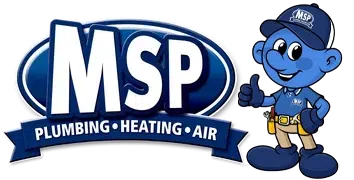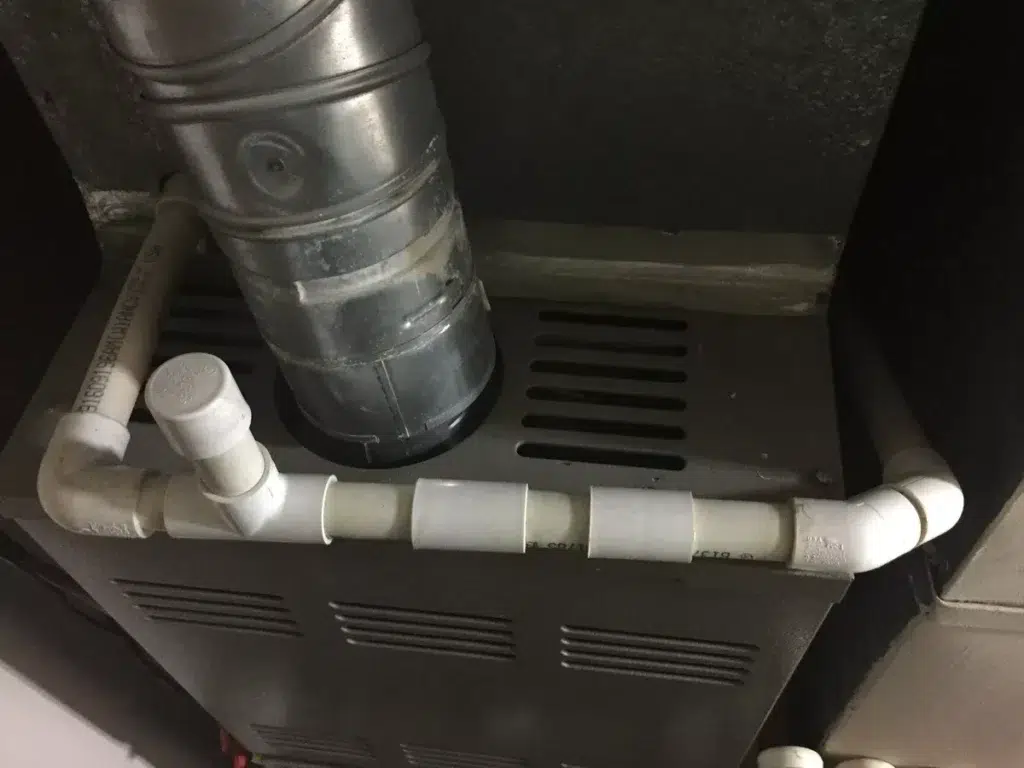Dealing with a clogged AC drain line can be a significant inconvenience, highlighting the importance of knowing how to address this common issue. The drain line in your air conditioner collects condensation produced as warm air passes over the cold evaporator coils. If this line becomes clogged, it can quickly fill with water, potentially causing your AC unit to shut down completely.
Fortunately, unclogging an AC drain line is typically a straightforward DIY task that most homeowners can manage. In this guide, we will explore:
If you’re uncomfortable handling this yourself or pressed for time, consider calling a professional HVAC technician. They can clear the drain line and perform comprehensive system checks to identify and resolve any related issues. Regular maintenance is crucial, especially if you notice frequent clogs, as it may indicate a more significant underlying problem.
Need help to unclog an AC drain line?
At MSP Plumbing Heating Air, we have more than a century of experience restoring AC systems. Whether you need an AC tune-up or an emergency repair, our prompt and friendly service is available same-day.
What Happens When Your AC’s Drain Line Is Clogged
As your air conditioner runs, it produces a limited amount of condensation. That condensation runs through the drain line and collects in the drain pan. When there’s too much condensation, or the line is clogged so water has nowhere to go, the result is extra moisture in your air conditioner. Over time, that water can freeze your evaporator coils, shutting down the entire system.
If you only have a partial clog, it could mean your AC unit is working overtime, trying to keep your home cool. Not enough draining means there are higher humidity levels, which your AC unit attempts to correct. You should also check for water damage if you notice a clogged drain line. Water backing up can spill and damage surrounding fixtures or the AC unit.
How to Unclog Your AC Drain Line
Unclogging your AC drain line is a relatively straightforward process that can be done with a few simple steps:
- Turn Off the AC: Turn off your AC system to prevent further water damage or electrical issues. Make sure you also cut power to the unit using the panel box.
- Find the Drain Line: The drain line is usually located near the condenser unit outside and by the air handler inside. In most cases, the drain line is a PVC pipe.
- Inspect for Blockages: Use a flashlight and look for visible blockages. Algae, dirt or mold buildup are often visible to the naked eye.
- Clear Clogs: Use a wire brush to break up any clogs you can reach. You may also need to attach a wet/dry vacuum to suck up any debris that might be blocking the drain line.
- Flush the Line: Once the visible blockages are removed, flush the drain line with a mix of water and vinegar or a specialized AC drain line cleaner. If a puddle forms at the end of the drain line, you’ve successfully cleared the clog.
- Schedule Regular Maintenance: To prevent future clogs and ensure optimal performance, schedule regular maintenance for your AC system.
If the above steps don’t fix your clogged drain line, it’s time to call in a professional. At MSP Plumbing Heating Air, we have specialized tools designed to clear these lines without damaging your system.
The Benefits of Routine AC Maintenance
No matter how quickly you can unclog an AC drain line, the best option is to prevent the problem. Routine AC maintenance done once a year keeps your lines clean and your filters clear. Your unit is also tested for any possible faults. All that adds up to lower cooling costs and fewer repairs.
Past due for your annual AC tune-up?
Contact MSP Plumbing Heating Air for same-day AC tune-ups on all makes and models. Our honest, up-front prices mean you won’t be surprised when you get the bill.

